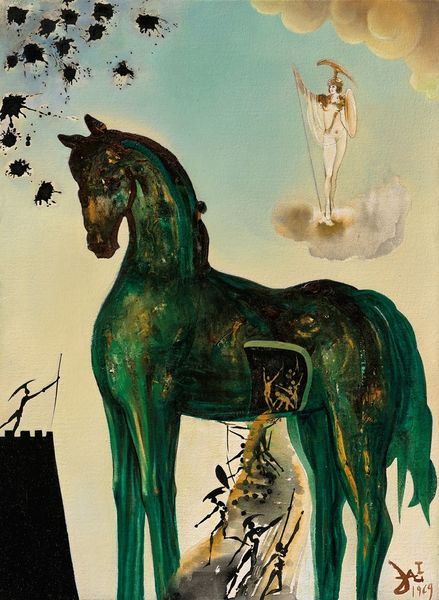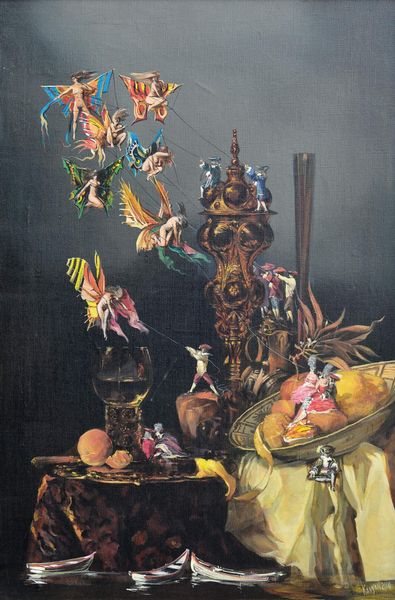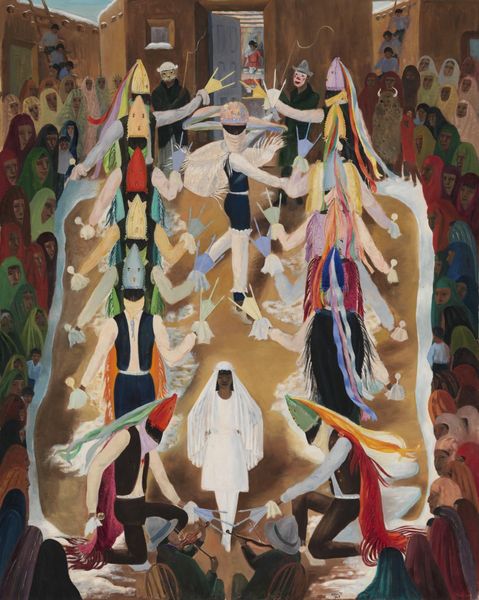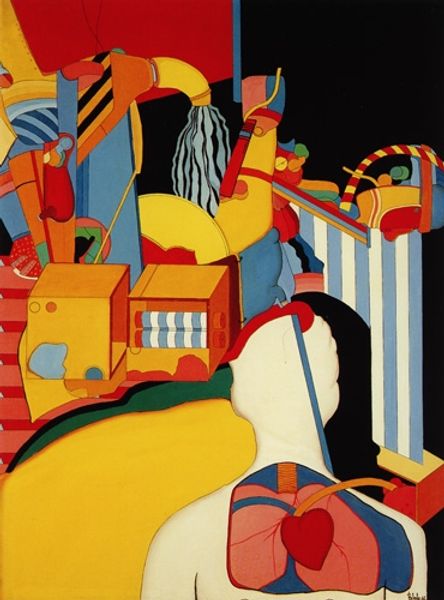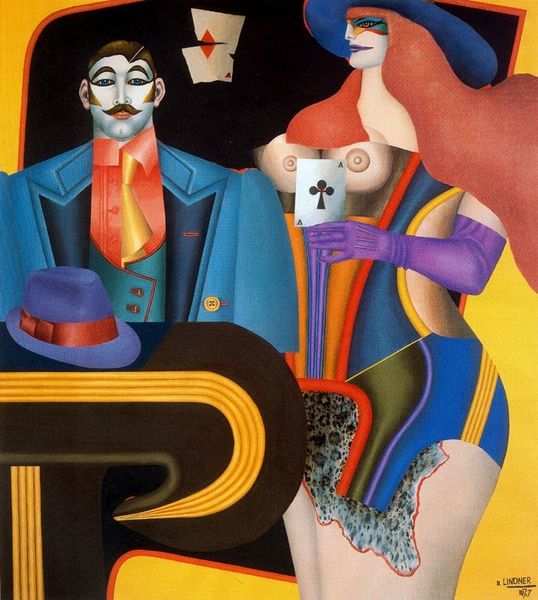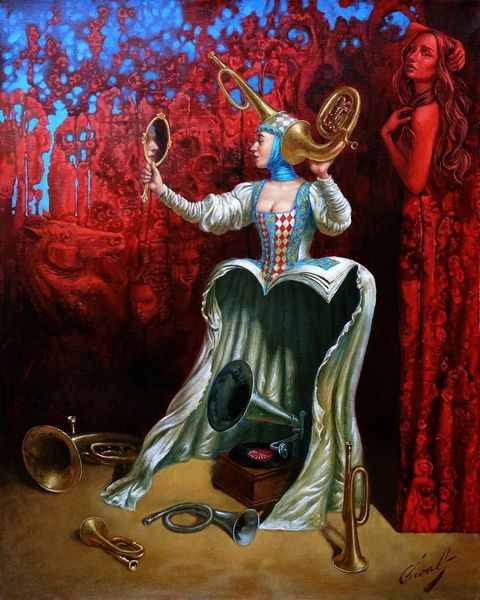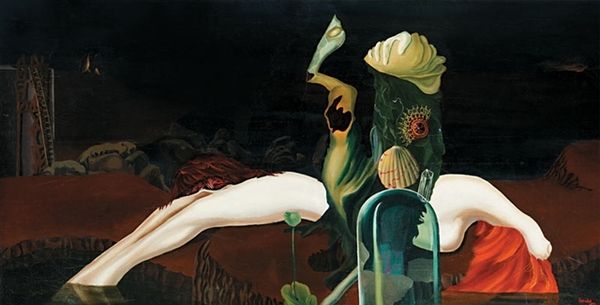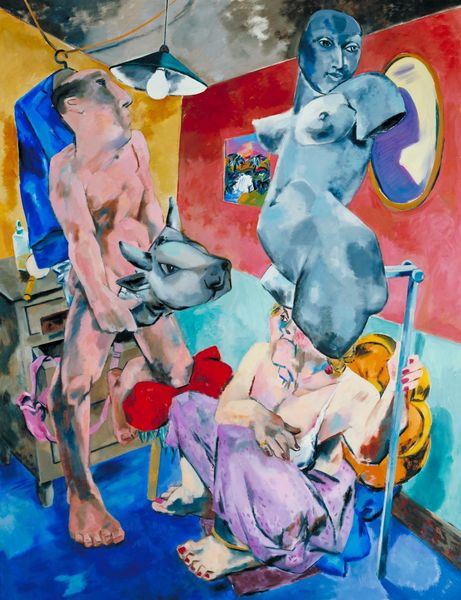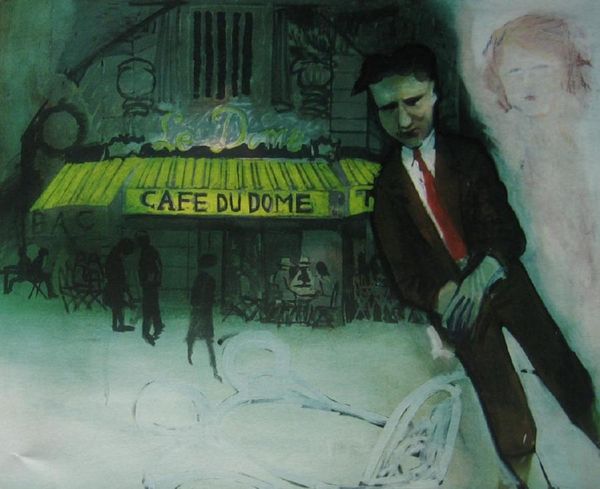
painting, oil-paint
#
portrait
#
painting
#
oil-paint
#
figuration
#
oil painting
#
neo expressionist
#
neo-expressionism
#
group-portraits
Copyright: Eric Fischl,Fair Use
Curator: This is Eric Fischl's "The Empress of Sorrow," an oil on canvas from 1992. What are your initial thoughts? Editor: Bleakness. A garish palette and strange figures, seemingly isolated, hinting at unseen tensions. Curator: Indeed. The painting places these figures within a disquieting scene, dominated by the looming presence of what appears to be a carousel horse, creating a curious juxtaposition of playfulness and gravity. Consider the composition. How does Fischl employ layering and the arrangement of forms to direct the viewer’s gaze? Editor: The theatrical presentation of the "Empress," coupled with the nonchalant figure on the left, feels highly staged. We seem to be watching some private, yet performed, interaction, and it implicates the viewer, demanding we interpret their relationship. It’s all so… deliberate. It can be read as critical reflection of theatre, spectatorship, and gender, for instance. Curator: The layering of textures and the interplay of light are equally crucial to unpack the semantic core of this painting. Notice the vibrant red-and-white kimono against the muted greens of the background, or the bright, unnatural lighting of the carousel—this is not realism. Rather, we confront something verging on surreal. Editor: Absolutely, and within the social context of its time, "The Empress of Sorrow" engages with identity performance, especially related to ideas of celebrity and public spectacle. It's easy to see this through the lens of how identities are crafted, bought, and sold in the public imagination. I would say Fischl explores how these characters negotiate between private struggle and a culture that can turn individuals into figures of either fascination or scorn. Curator: I find that you point to a significant theme and valid interpretations. Ultimately, what's compelling about Fischl's work is his invitation for subjective contemplation; an attempt at accessing and giving form to emotions and stories simmering just below the surface. Editor: Agreed. I leave with questions, a productive space to rethink what a portrait can and cannot show of social reality.
Comments
No comments
Be the first to comment and join the conversation on the ultimate creative platform.
